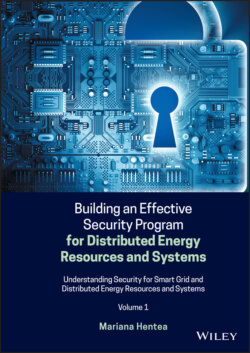Читать книгу Building an Effective Security Program for Distributed Energy Resources and Systems - Mariana Hentea - Страница 16
1.2.1 Traditional Power Grid Architecture
ОглавлениеThe traditional architecture (see Figure 1.1) is based on large‐scale generation remotely located from consumers, hierarchical control structures with minimal feedback, limited energy storage, one‐way control, and passive loads.
Figure 1.1 Traditional electricity delivery system.
Source: [DOE 2015a]. Public Domain.
As illustrated in Figure 1.1, the electricity sector is composed of four distinct functions: generation, transmission, distribution, and system operations. Once electricity is generated, it is generally sent through high‐voltage, high‐capacity transmission lines to local electricity distributors. Once there, electricity is transformed into a lower voltage and sent through local distribution lines for consumption by industrial plants, businesses, and residential consumers.
Because electric energy is generated and consumed almost instantaneously, the operation of an electric power system requires that a system operator constantly balance the generation and consumption of power. Figure 1.2 shows additional functional systems (transmission system, system operations, distribution system) and substation connected to different customers (offices, residential customers, and industrial customers). Information including basic definitions of terms and concepts related to the electrical power grid can be also found in the references and glossaries included in Appendix B.
Figure 1.2 Functions of the electricity sector.
Source: [GAO 2011]. Public Domain.
